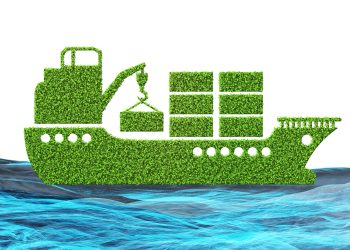Underwater sound created by dredging equipment below the water surface can impact marine life and requires careful evaluation and monitoring, according to the International Association of Dredging Companies.
Four important factors must be considered when deciding the impact of underwater sound – the ambient sound, the radiated sound and the sensitivity of the receptor (the marine life). These are:
- Establishing levels of ambient sound on-site, which can be the borrow pit, the construction site or going to and from the site and pit;
- Establishing levels of radiated sound from a wide range of dredging vessels and other equipment while they operate during various dredging activities;
- Comparing the ambient versus radiated sound levels to establish any increases from dredging;
- Measuring the receptor mechanisms (that is the marine animals), to determine how sensitive the specific species are to specific levels of sound.
Ambient sound
Understanding whether or not sound impacts from dredging are of concern is difficult. The first step is to determine the level of ambient sound. Ambient sound is the sound present in a marine environment that comes from wind, waves, surf, animal sounds and other sources not related to the dredging project.
[smlsubform prepend=”GET THE SAFETY4SEA IN YOUR INBOX!” showname=false emailtxt=”” emailholder=”Enter your email address” showsubmit=true submittxt=”Submit” jsthanks=false thankyou=”Thank you for subscribing to our mailing list”]
Ambient sounds that exist in a busy harbour are different than those in the open sea. Establishing these ‘background’ levels of sound will help create a baseline to see if dredging is having an impact.
Radiated sound
Radiated sound comes from the specific source being studied. In the case of dredging projects these sources are the particular dredgers or equipment being used. The evaluation must also contain the activity that the dredger is undertaking. For example, radiated sound from a trailing suction hopper dredger comes while it is dredging, while it is transporting sediment and while it is discharging sediment.
Operators should also consider that the sound levels of a dredger can vary during sand or rock dredging, during pumping ashore, rainbowing, or bottom discharging of sand. Sound from cutting and placing or disposing of rock is very different from a trailer.
In short, the underwater sound level of each type of dredger during each phases of the dredging cycle must be measured.
Receptor sensitivity
The marine fauna that is present in the areas where dredging activities occur are not all the same, while their sensitivity to sound is also not the same. A thorough study must evaluate the sound sensitivity of specific species in the work area. Questions to be considered are:
- Will the fish or mammal swim away from the sound or be attracted toward it?
- Will the animal’s hearing be affected temporarily or permanently or not at all?
As most marine mammals and fish are moving, measurements are difficult to establish. The fact that some species do not remain in a specific underwater site for long may also address the effects of sound disturbances. However, for species that live near a port or river where they nest or do not migrate may lead to a more hearing impairment.
Hydrophone
Underwater sound is monitored by hydrophones. Hydrophones measure things like Sound Pressure Level (SPL) and Sound Exposure Level (SEL), which reflect the total amount of sound that an animal receives over a specific length of time
The effects of the reflections at the water surface and at the seabed along with the various speeds of sound at different water depths again makes measuring very complicated.
Modelling
Underwater sound levels and their affects demand specific expertise and modelling skills. In the majority cases, independent assessors will be used to create a baseline levels of ambient sound, before an operation starts.
Predictive modelling may also take place. During the operation these measurements and the modelling results will be examined and compared. If sound levels surpass those stipulated by authorities and permits, work methods must be evaluated and other methods may be considered.
In general, to fulfil the expectations of an Environmental Impact Assessment, underwater sound during all the different phases of the dredging cycle must be monitored. These data are then compared with background sound and other sources of sound
IADC said.
Finally, sound levels must be evaluated in relation to their possible effect on the specific marine fauna. The aim of evaluating underwater sound is to ensure a balance between the environmental impacts and socio-economic benefits of the dredging project. Underwater sound should also be examined with the ecosystem services in mind.

































































